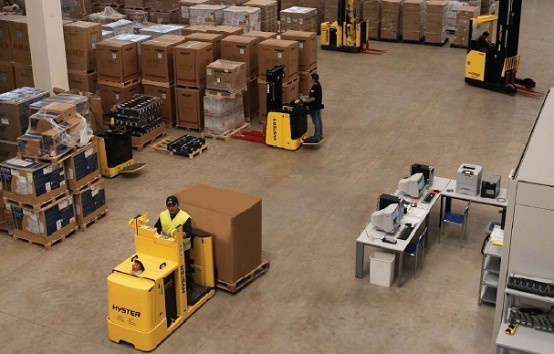Advantages and disadvantages of cross-docking
There are numerous factors that need to be considered when making an informed decision to implement cross-docking into an organisation. Every organisation has their priorities in terms of costs, warehouse space, geographical specifics, and product types. Therefore the advantages and disadvantages of implementing cross-docking into your organisations supply chain need to be considered and weighed up in order to make the right decision. The below list of advantages and disadvantages is designed to assist in this process.

Advantages of cross-docking
- Reduces material handling.
- Reduces need to store products in warehouse.
- No need for large warehouse areas
- Reduced labour costs (no packaging and storing).
- Reduced time to reach customer.
- Transportation has fuller loads for each trip therefore a saving in transportation costs while also being more environmentally friendly.
- Products are moved more quickly through a cross dock.
- Easier to screen product quality.
- Elimination of processes such as ‘pick-location’ and ‘order picking’
- Cross docking terminals are less expensive to construct than your average warehouse.
- High turnover of products with everything moving quickly through the cross docking terminal. Products usually spend less than 24 hours here.
- Products destined for a similar end point can be transported as a full load, reducing overall distribution cost.
Disadvantages of cross-docking
- Much management attention, time and planning is necessary to make it work effectively.
- Setting up the cross docking terminal structures would take quite a bit of time and capital to start with.
- Some suppliers would not be able to deliver customer ready products to the cross docking terminal.
- A sufficient number of transport carriers are necessary for the cross docking terminal to run smoothly, therefore is mainly dependent on trucking.
- A high volume of product is necessary to be cost effective.
- The organisation has to have a confortable reliance that their suppliers will deliver the right product in its right amount to the cross docking terminal on time which doesn’t leave too much room for error.
Understanding the advantages and disadvantages of cross-docking and how they fit with your organisation is an important step for evaluating the supply chain process and deciding whether Cross-docking is right for your organisation. Make sure you understand the key factor requirements of your organisation. For example: High Volume Turnover, Rapid turnaround, Perishable goods are all factors that indicate a successful fit for Cross-Docking. Analyse your key factor requirements and decide from there.